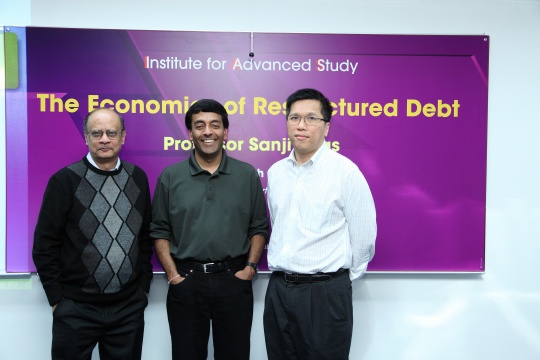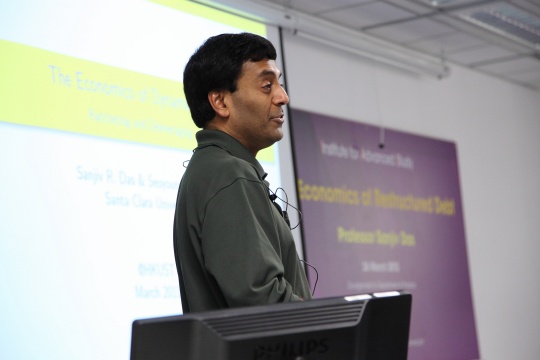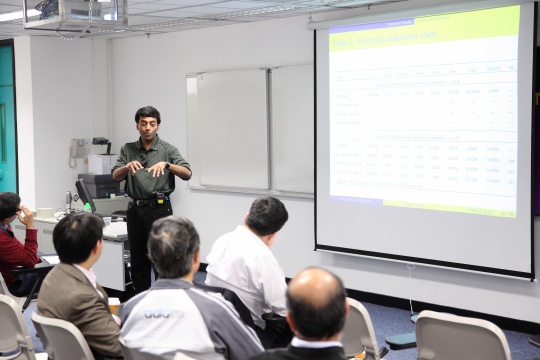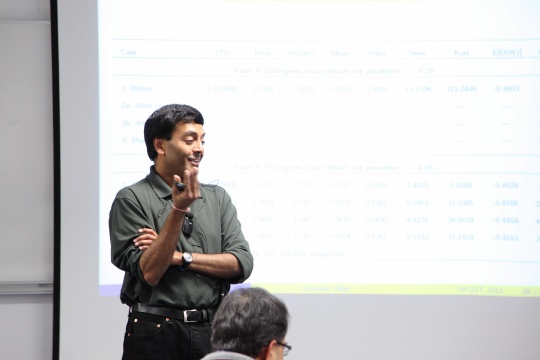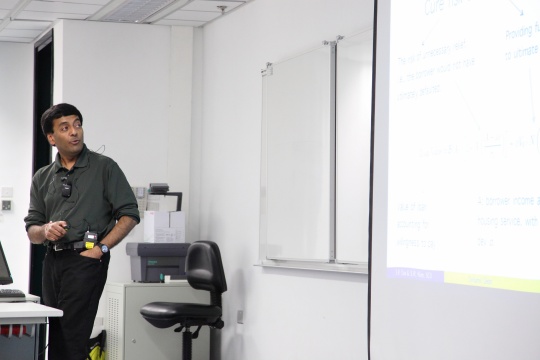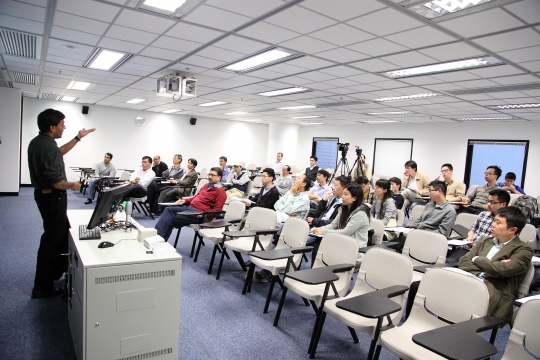The Economics of Restructured Debt
Abstracts
The lecture comprises two related papers of the speaker in collaboration with Prof Seoyoung Kim, who is also at Santa Clara University.
Going for Broke: Optimizing Investments in Distressed Debt
What is the best way to restructure and optimize portfolios of distressed debt? What are the gains from doing so, and where do the gains come from? The speaker and Prof Seoyoung Kim employ a structural model for the pricing and optimal restructuring of distressed debt, i.e., loans that are under-collateralized and are at risk of borrower default, where willingness to pay and ability to pay are at issue. Distressed-debt investing requires optimization over all moments, not just mean and variance, and with debt restructuring, the investor can endogenously alter the return distribution of the candidate securities before subjecting them to portfolio optimization. They show that post-restructuring return distributions of distressed debt portfolios are attractive to fixed-income investors, with risk-adjusted certainty equivalent yield pick-ups in the hundreds of basis points.
Credit Spreads with Dynamic Debt
The speaker and Prof Seoyoung Kim provide a framework to analyze debt with a latent option to restructure. Specifically, they extend the Merton (1974) model for debt guarantees in a setting with dynamic debt, where leverage can be ratcheted up as well as restructured down through pre-specified policies. The possibility of future increases in leverage, i.e., ratchets through additional debt, increase ex-ante credit spreads for initial debt holders. On the other hand, a capital structure that is automatically restructured in times of distress through a debt-equity swap makes borrowers better off through lower ex-ante spreads. They show that for many dynamic debt covenants, ex-ante credit spread term structures may be derived in closed-form using modified barrier option mathematics. They consider several possible combinations of ratchets and restructurings, and demonstrate how such prepackaged debt restructuring leads to term structures of credit spreads that are more consistent with observed empirics. They also show that automatic restructuring covenants increase the slope of the credit curve and that increased deadweight costs reduce its slope.
About the speaker
Prof. Sanjiv Das received his PhD in Finance from New York University in 1994. Prior to being an academic, he worked in the derivatives business in the Asia-Pacific region as a Vice-President at Citibank. He was previously an Associate Professor of the Graduate School of Business Administration at Harvard University and of Corporate Finance at University of California at Berkeley. He joined Santa Clara University in 2000 and is currently the William and Janice Terry Professor of Finance of the Leavey School of Business.
Prof. Das’s current research interests include the modeling of default risk, machine learning, social networks, derivatives pricing models, portfolio theory, and venture capital. He has published over seventy articles in academic journals, and has won numerous awards for research and teaching. His recent book "Derivatives: Principles and Practice" was published in May 2010. He is a senior editor of The Journal of Investment Management, co-editor of The Journal of Derivatives, and associate editor of other academic journals. He is also a Senior Fellow at the Center for Financial Research of the Federal Deposit Insurance Corporation.

